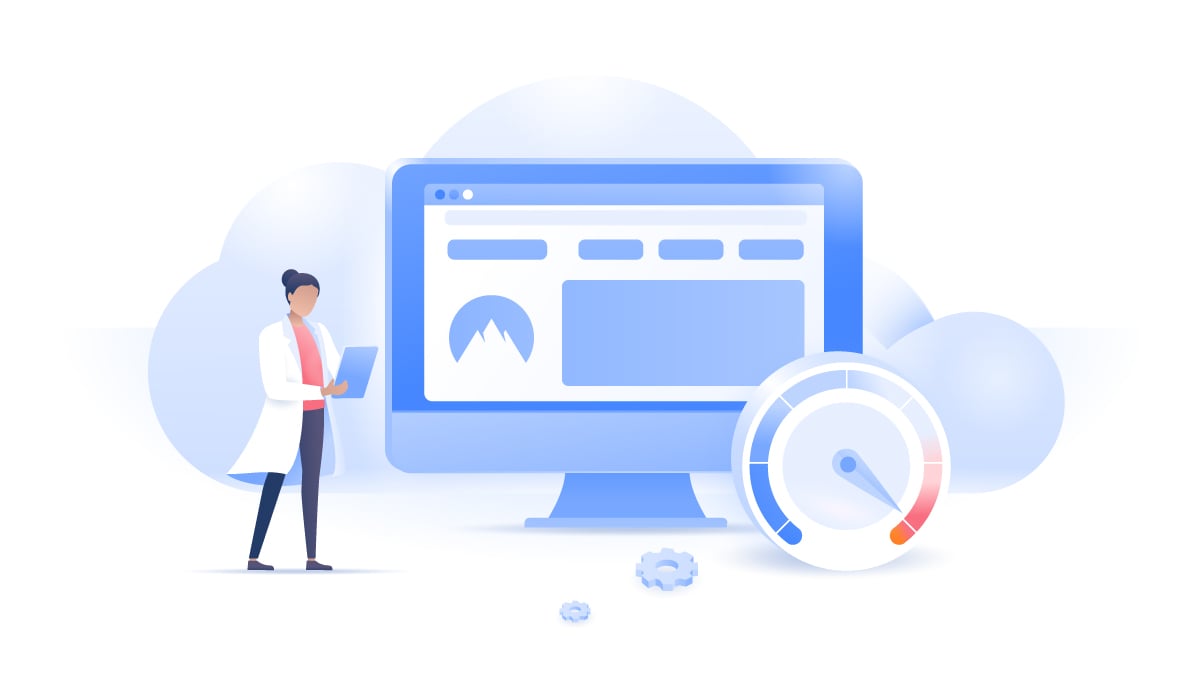What is CaaS, or cloud as a service?
Cloud as a service (CaaS) is a business model that allows cloud service providers to host various cloud services through their servers and provide them to companies for a price or subscription fee. The model has allowed for better scalability and flexibility and lower costs. Many businesses rely on cloud computing providers to manage cloud infrastructure so they can focus on growth. Let’s take a closer look at what CaaS is, how it works, and the benefits it delivers.
Contents
What is cloud as a service?
Cloud as a service (CaaS) is a method of delivering cloud services to organizations through pay-per-use or subscriptions. The cloud service or cloud computing provider hosts cloud services on its servers for organizations willing to pay.
The CaaS model allows companies to use a wide range of cloud resources, infrastructure, and applications without owning and managing them. Businesses are not required to host the services on their own servers, so they can focus on their day-to-day processes and growth.
They can also subscribe or pay for specific services and use them throughout the subscription period. This allows them to easily quit a service as soon as it becomes obsolete for their current business strategy.
At the same time, cloud providers benefit from a constant influx of subscriptions that can easily be used to maintain and improve cloud architecture.
How does cloud as a service work?
The way cloud as a service works is simple — a cloud provider creates a set of cloud services companies can subscribe to or pay for via the pay-as-you-go model. The cloud service provider develops a framework businesses use to build applications and offer clients their own services.
Businesses get to access and use the services, while the provider handles the rest, including control and management of servers, network, data, storage, middleware, and operating systems.
By offering CaaS through subscriptions or the pay-per-use model, cloud as a service offers significant benefits for both providers and the companies paying for the services.
Moreover, the service is not tied to a specific address, so companies can use it anywhere while having the option to move to another location if required.
This model has no architecture restrictions, and companies can choose how they store their sensitive data, how much money they want to spend, and which tools they want to use for creating their applications.
Cloud providers also offer storage and security, so companies don’t have to worry about upkeep costs or going over storage capacity as they scale up.
What are the benefits of cloud as a service?
Cloud as a service provides several benefits. Let’s review the biggest ones.
Scalability
Scaling can take months, and the more complicated the company’s systems, the longer it is likely to take. However, with CaaS, businesses can scale within minutes, be it up or down.
The pay-as-you-go model is especially helpful here because organizations don’t need to think about storage. CaaS providers typically offer up to 20% storage overage, meaning companies are charged for what they use, not a fixed amount.
Flexibility
With CaaS, companies can build and move without worrying about cloud infrastructure resources. As mentioned, cloud computing providers allow organizations to use their services wherever they are.
Plus, the underlying infrastructure is never the problem, because they get exactly what they pay for. Businesses get an identical experience across public and private clouds.
Cost-efficiency
With cloud as a service, there’s no way for companies to overprovision specific cloud resources, because they pay only for what they need. Plus, thanks to the subscription-based model, it’s easier to determine costs in advance and create more accurate budgets.
Speed
Keeping pace with the competition is crucial, and the CaaS model allows precisely that. It provides ease of use, scalability, and flexibility, which translates to speed. The company’s processes can run faster, and employees and executives get insights whenever and wherever they need them.
Improved security
Cloud service providers offer some of the most robust cloud security systems available, so there’s no need to worry about safety. Moreover, it’s always possible to utilize a zero-trust security strategy and encrypt all data to ensure maximum safety.
On-demand services
All major cloud providers let organizations use specific services on demand. They can subscribe to certain options and pay for them as needed.
Less time, more value
Developing applications is often much faster with CaaS, allowing businesses to build complete systems in only a few minutes.
What’s the difference between IaaS, PaaS, and SaaS?
Cloud as a service is not a unified model but has several different types. In essence, there are three types of CaaS you need to know of:
- Infrastructure as a service (IaaS) — Infrastructure as a service provides on-demand access to cloud-based infrastructure like storage capacity, servers, and network resources. IaaS customers essentially use hardware through a network connection. Benefits of IaaS include higher availability, lower latency, quicker access to leading tech, and comprehensive security.
- Platform as a service (PaaS) — Platform as a service delivers a cloud-based platform and operating system used for creating, improving, and running applications. It provides development tools and allows businesses to make and enhance applications faster and at lower costs, but also to test and adopt new technologies without taking too many risks.
- Software as a service (SaaS) — Software as a service represents a software application hosted on the cloud and ready for use. SaaS customers only need to pay a specific fee, and they get to use a complete online application on different devices connected to the internet. The primary benefit is that a company can completely offload application management and infrastructure to the SaaS provider.
What are the challenges of using cloud as a service?
Despite sounding like an excellent solution for many, cloud as a service still has challenges it needs to overcome. Here’s an overview of what every business interested in a CaaS option needs to know:
- Data security — CaaS providers use some of the most robust security measures available, but this model still operates on a shared responsibility standard for cloud security. Organizations have to settle for keeping their sensitive data on servers in an unknown location, kept safe by third parties.
- Need for hybrid cloud environment — The need for these environments combining public and private clouds is on the rise because they provide better efficiency, lower costs, and improved digital transformations. Plus, many new applications are created to work in the cloud, necessitating hybrid cloud environments.
- Connection issues — Cloud adoption requires stable connections between the cloud computing provider and the companies using its services. As broadband issues are not uncommon, backup network connections are often needed.
- Management challenges for IT teams — IT teams tend to have problems with CaaS because they must deal with public, private, and even edge cloud resources. They have to work with numerous platforms, many of which have entirely different architectures and use distinct tools, presenting challenges.
- Lack of control of cloud infrastructure — This is often a good thing for companies, but the lack of control can sometimes affect regulatory demands for data being stored in specific locations.
Examples of cloud as a service
Cloud computing has dramatically increased in popularity in the last 14 years, especially in the case of SaaS and IaaS solutions. To help you better understand CaaS and grasp its importance, here are a couple of real-world examples:
Cloud storage examples
Cloud storage providers keep rising in popularity and number, and many top companies are now competing in this sphere.
Dropbox is considered the market leader here. It offers up to 2 GB of free data storage, while the Google Suite free account totals 15 GB shared between Gmail, Photos, and Drive. Other big names include Amazon AWS, Microsoft’s OneDrive, and Mega, a privacy-focused cloud storage provider offering 20 GB of end-to-end encrypted cloud storage.
Marketing cloud platform examples
End-to-end digital marketing platforms let users target leads and manage existing contacts. Additionally, they provide much-needed personalization.
Good examples of these marketing cloud platforms are Hubspot, Salesforce, Adobe Marketing Cloud, and Maropost Marketing Cloud.
CaaS examples in healthcare
With the help of CaaS solutions, physicians, nurses, and hospital administrators can share information quickly and seamlessly, no matter their location. On top of that, costs are reduced, resulting in a significant increase in efficiency. All of that leads to better care for patients.
Unfortunately, shifting from legacy systems to cloud computing is a massive operational challenge for healthcare institutions, so many have yet to switch to CaaS solutions.
Cloud as a service is crucial for the modern world, providing numerous benefits for businesses and their clients. Some of the challenges with CaaS have yet to be addressed, but it’s clear that the model is here to stay and improve in quality and popularity.
Want to read more like this?
Get the latest news and tips from NordVPN.

